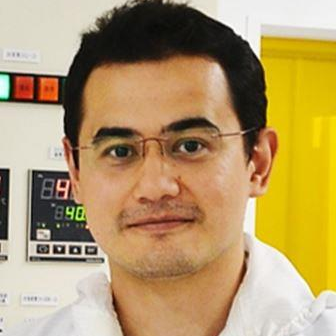MEMS Based Biosensors and Its Applications
A special issue of Biosensors (ISSN 2079-6374). This special issue belongs to the section "Nano- and Micro-Technologies in Biosensors".
Deadline for manuscript submissions: 30 May 2024 | Viewed by 1784
Special Issue Editors
Interests: biosensors; signal measurement; biorobotics; micro devices; MEMS sensors; glass micro fluidicsdevice; micro fabrication
Special Issues, Collections and Topics in MDPI journals
Interests: structural health monitoring; smart composites; sensors and actuators; energy harvesting
Special Issues, Collections and Topics in MDPI journals
Interests: biomechanics; force measurement; MEMS based sensors; microfluidics; biorobotics
Interests: biomicrofluidics; plasmonic biosensors; droplet microfluidics; lab-on-a-chip devices; cytometry
Special Issues, Collections and Topics in MDPI journals
Special Issue Information
Dear Colleagues,
Micro-Electro-Mechanical Systems (MEMS) represent a key technology that can be defined as miniaturized mechanical and electro-mechanical elements (i.e., devices and structures) that are made using microfabrication techniques. Over the last few decades, an extremely large number of sensors have been developed for almost every possible sensing task, including temperature, pressure, inertial forces, chemical species, magnetic fields, radiation, etc. Research fields that require biosensoring, such as biology, clinical diagnosis and medicine particularly benefit from and often require the MEMS-based miniaturization of devices and systems.
Therefore, the main topic of this Special Issue aims to gather original articles and reviews which cover research advancements, fabrication, innovative applications, new challenges and future perspectives regarding the latest sensors (transducers) fabricated or functionalized using MEMS technology as miniaturized detection devices/systems for various applications in the field of biosensoring (such as in the fields of biology, chemistry, clinical diagnosis, healthcare, food, pollution, etc.).
We largely welcome contributions in all fields of MEMS-based sensors, including novel principles, structures, methodologies and applications. These are included but not limited to:
- Novel MEMS fabrication technology for sensor devices;
- MEMS-based small-scale system for measurement, evaluation, analysis and detection;
- Development of methodologies and applications based on current MEMS technology;
- Other MEMS-based biophotonic/chemical/electronical sensors and systems;
- Biological and chemical sensors, including smart materials and microfluidic components.
Dr. Yaxiaer Yalikun
Prof. Dr. Yang Yang
Dr. Kaoru Uesugi
Dr. Ming Li
Guest Editors
Manuscript Submission Information
Manuscripts should be submitted online at www.mdpi.com by registering and logging in to this website. Once you are registered, click here to go to the submission form. Manuscripts can be submitted until the deadline. All submissions that pass pre-check are peer-reviewed. Accepted papers will be published continuously in the journal (as soon as accepted) and will be listed together on the special issue website. Research articles, review articles as well as short communications are invited. For planned papers, a title and short abstract (about 100 words) can be sent to the Editorial Office for announcement on this website.
Submitted manuscripts should not have been published previously, nor be under consideration for publication elsewhere (except conference proceedings papers). All manuscripts are thoroughly refereed through a single-blind peer-review process. A guide for authors and other relevant information for submission of manuscripts is available on the Instructions for Authors page. Biosensors is an international peer-reviewed open access monthly journal published by MDPI.
Please visit the Instructions for Authors page before submitting a manuscript. The Article Processing Charge (APC) for publication in this open access journal is 2700 CHF (Swiss Francs). Submitted papers should be well formatted and use good English. Authors may use MDPI's English editing service prior to publication or during author revisions.
Keywords
- MEMS
- micro fabrication
- smallscale functional structures/sensors/systems
- biophotonic/optical/eletronical/chemical sensing and measuring









